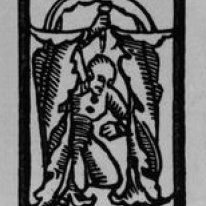Translations of the Bible
The first translations of the Bible, written in Hebrew, made on the Greek and Latin languages. This – the Septuagint (285 BC, the city of Alexandria, Egypt, a group of authors consisted of 72 people) and Vulgate (end of the 4th – beginning of the 5th century BC, Bethlehem, Jerome Stradonsky. In the 9th century the main work of Cyril and Methodius to translate the Bible into Church Slavonic (Old Bulgarian) language. Before the advent of printing the Bible, parts of or all, has been translated into 33 languages. Its translations – one of the most significant events of the formation and development of human civilization and the main instrument for the formation of modern European languages. «Book of books» – the first major work, which appeared in the art of printing, high – tech Renaissance (mid–15th century, Mainz, Iogan Gutenberg).
The genius of Francysk Skaryna developed in the humanistic spirit of the Renaissance. After studying at European universities, defending his doctoral degree in philosophy and medicine, Skorina ranked among educated people in Europe. With the recognition of the doctor of medical sciences, he cardinally changed the course of action, concentrating its forces at work on translation and publication of books of the Bible. Place and time of its publication (Prague, 1517–1519) – sidereal time of his life. Translation is made in full, but the books remained not printed.
Today the Bible of Francysk Skaryna includes 23 books of the Old Testament. This is the second complete printed translation of the Book of books in the Slavic world after two Czech translations (1488 and 1506 years). The first complete printed translation into other European languages are: German (1466), Italian (1471), Catalan (1478), French (1530), Dutch (1522), English (1535), Sweden (1541), Denmark (1550) Spanish (1553), Polish (1561).
Bible of Skaryna – sensation in the spiritual – cultural life of Eastern Europe of the 16th century. Made with plenty of advance of his time, Bible surprised and fascinated his contemporaries. Free in his work, he cared not about compliance with the canons, but about the convenience and beauty of the reports of the Word to the readers and listeners of different social levels and different cultural preparedness. Extraordinary feature of his book is that it's not a thick folio, and serial production of selected high–quality books. Francysk Skaryna, open to all the best, which was at that time in book design, for the first time in the history of the East Slavic books, used a new scheme of organization of the text. The scheme was attended by cover sheets, explanatory headings, numbering on each page, punctuation, numerous illustrations in printing technology, an epilogue to the main output data – what we now use.
Skaryna is among the founders of a new genre – the art of the book. Its uniqueness is the Bible – in the engraving self–portrait, printed in two different editions of the publication. Other such translation in the history of publishing was not found. Selfportrait is a sign that Skaryna is the Master. Bible of Belarusian enlightener reflected the desires of his civil and literary talents. It gave him a chance to speak in the hope of being heard by a wide range of readers and listeners to draw their countrymen to read, contribute to the development of their long life and the formation of civil awareness. Francysk Skaryna’s books are among the first class of printed books of the 16th century.
For visitors
opening hours
Open: 11.00–19.00
Daily
Ticket desk open: 11.00 – 18.30
Visitors enter: 11.00 – 18.30
admission
Adults:
Permanent exhibitions tour –
Br 10 BYN
Guided tour –
Br 30 BYN
Full-time students:
Permanent exhibitions tour –
Br 8 BYN
Guided tour –
Br 25 BYN
Schoolchildren and specialised secondary school students:
Permanent exhibitions tour –
Br 5 BYN
Guided tour –
Br 15 BYN
Retirees:
Permanent excibitions tour – 5 BYN
Guided tour – 15 BYN
Contacts
12 Vulica Karla Marksa, Minsk, 220030, Republic of Belarus
+375 17 3237665
+375 17 3748322
+375 17 3654827
histmuseum@histmuseum.by
Scientific department
office@histmuseum.by
Museum reception









